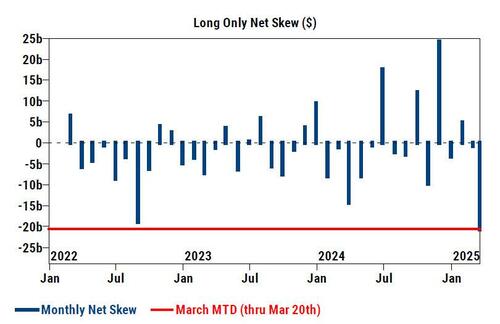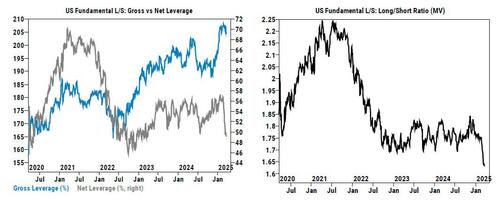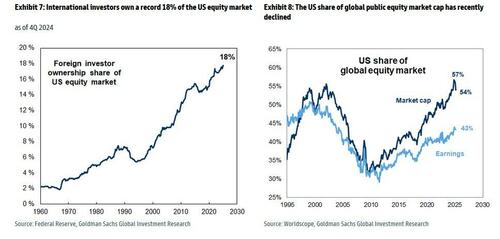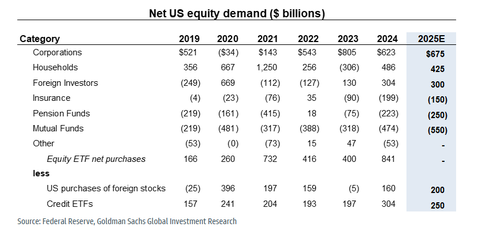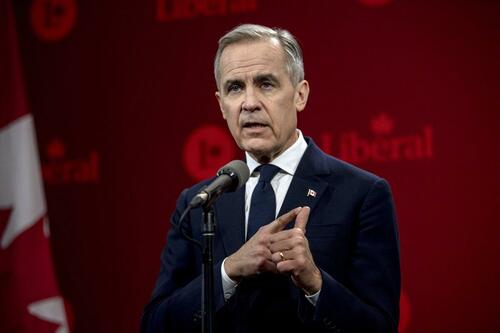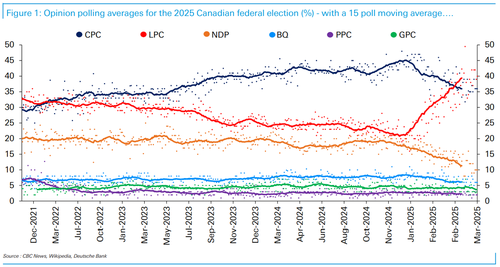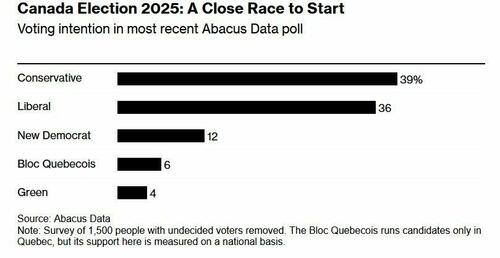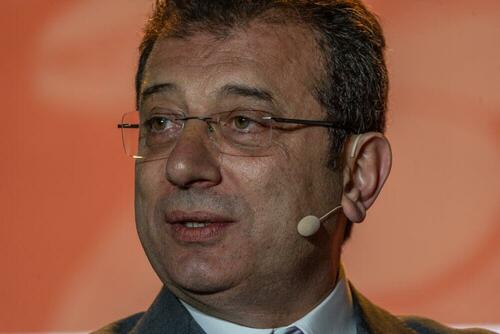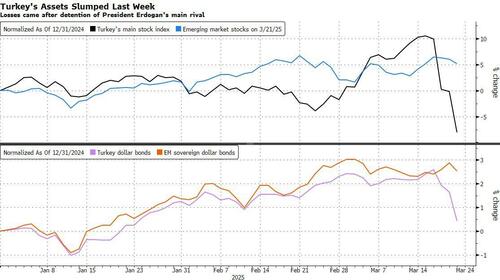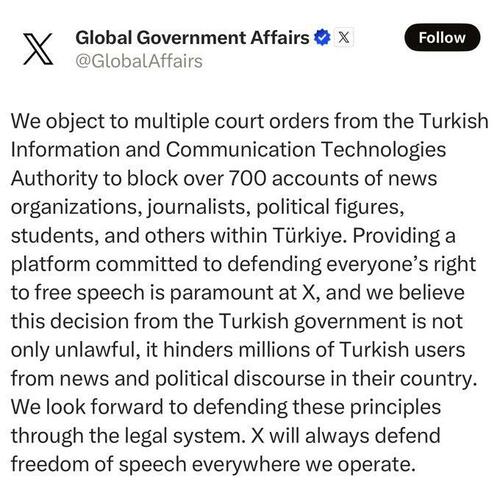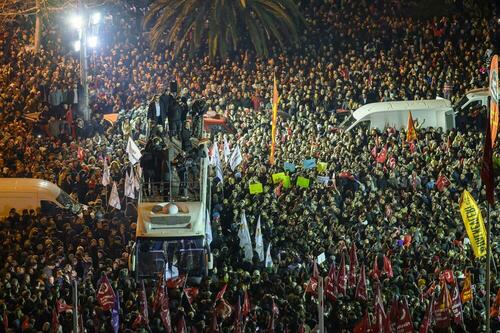Is The EU’s New Army The Final Nail In The Project’s Coffin?
Authored by Martin Jay,
The EU army idea is actually more complicated than you might think…
It used to be quite a common thing for people in polite society to say “imagine if women ran the world…we would certainly have less wars, right?”. Wrong. Women are running the world, well, at least the EU world. Three women to be precise. Ursula von der Leyen, EU commission boss, Annalena Baerbock, Germany’s foreign minister and of course, last but not least, the EU’s own foreign affairs chief, Kaja Kallas. And what do all three of these women have in common, apart from having names which sound like sexually transmitted diseases? They all want war.
In line with spectacularly poor decision making right from the beginning of the Ukraine war, with probably Russian sanctions at the top of the list of stupid ideas, the EU has only one way forward in Ukraine. At whatever cost, it must come out at least not looking like it lost. The EU project is very much like an old man on a bike moving very slowly along a Dutch cyclists’ path. The fear from the elites in the EU is that if he falls off the bike, he will never get back on. The constant worry from top EU figures is that if the EU loses its momentum with press coverage and relevance in general, then a pause – any pause – could be devastating. This, you might be surprised to hear, is what EU officials themselves confided in me when I was based in the Belgian capital. Such an expression gives you an idea of how little confidence the EU has in itself as a worthy, stable long-term project.
And so the madness escalates now to such a point where we are actually looking at draining the wallets and purses of our own very poorest people to fund the ultimate EU sex toy going: an EU army.
The idea of an EU army is not new. As a notion, it’s as old as the hills as hard core federalists in Brussels have been arguing for the EU to have its own army for at least twenty years, but until now failed. The main reason for the idea not getting off the ground is that it created too many new, worrying political problems for the EU to wrangle with. In a nutshell, there was always a risk of a new political crisis that an EU army would create as member states argue over which country gets to run it, which nationality is its head, where it would be based and how politically would it be run, based on what decision making structure? (existing EU council, EU commission, member states themselves in a new set up via defence ministries). The concern was always that Germany would have too much power and then this would open an old wound about the country re-arming and rekindling memories of 1939. And we all know where that led.
The EU army idea is actually more complicated than you might think. One of the reasons why it never got off the ground despite several serious attempts is that both the EU and member states are both confused and lack confidence about such a bold plan. They are literally concerned the idea could blow up in their faces. It’s what Americans call ‘blowback’. No, that’s nothing to do with the German foreign minister or even innuendo. It’s a military term for when a gun throws back energy in your face when it discharges and wounds whoever is holding the weapon.
For a long time the EU itself wanted the army to be very much controlled by Brussels but knew that the big guns would not wear that. And so, for them, like those in the European Commission it was about giving power away to a new body, a new layer of EU power, as though there aren’t enough institutions in Brussels which already sap away power from member states. The attitude was somewhat self-defeating. ‘If we (the commission) don’t create this entity, then Germany may well do it on their own anyway, and then we will lose the power’ is the mentality in Brussels. Indeed, Germany for at least a decade has been toying with the idea of having its own EU army, which creates a real headache for Brussels as it gives crucial power to one member state who many would argue already wields quite enough in the first place. The German parliament a few years ago leaked a document suggesting a new international army which Germany would run, which would be sent to troubled hotspots around the world and would be joined by a few allies who would play a supporting role.
The problem with this is twofold.
One, a good number of Germans would be very unhappy about his and believe that Germany should never be allowed to return to its former military power of the 1930s.
Secondly, under such a set-up, the EU would suffer considerably as it would throw a spotlight on its own weakness and underline how ineffective Brussels is, given that it has no military edge and that one member state has gone rogue with a geo-military policy.
And so two scenarios present themselves:
-
Germany being the main player in an EU army created and apparently run from Brussels – at least in appearance; or
-
Berlin running its own EU army which isn’t called an EU army but the rest of the world will consider it to be one.
Neither of these scenarios really does the EU any favours.
But it would seem this is what these three ladies have their eye on.
Which is why they have put so much emphasis on 800 billion euros being found among EU member states contributions, so that it will have an EU badge and its centre of power would be Brussels. France, Germany, Italy, Poland and the UK would be part of such a new, shiny EU pillar of NATO. And yet, it is Britain’s role, considered crucial, which will dilute the EU dream of it being entirely a Brussels wet dream project. In many ways, the reaction from these three women follows last year’s conference set up by Macron to create a coalition of EU member states, plus the UK, for big foreign policy ideas which would run parallel to the EU’s foreign thingy in Brussels. Defence spending and sending an EU army – which included the UK and Turkey – to places where the EU felt it could confidently flex its muscles was part of the whole plan.
For these three wicked witches to conjure up such a Macbethian plan to slay Macron and his big idea is worrying on a Shakespearian level, to say the least. It’s hard to say at the moment of writing whether it’s a real plan, as it’s already been blocked by the Netherlands, or it’s a plan on paper designed to impress Trump at a critical moment of negotiations. Does the EU believe that these talks could go on for months, perhaps even a year or more and so therefore to send a few hundred tanks to Kiev would only bolster both Zelenksy’s and the EU’s credibility as players when neither are actually even sitting on the reserves’ bench? Possibly. Have the tanks even been built? Nope.
One witty pundit for RT, a former anchor, opined quite amusingly about the role of the UK, suggesting that London’s ability to be a global military player is out of touch with reality.
“The British defense secretary claims that the need for a weapons shopping spree actually comes from a place of deep, inner hippie-ness” Rachel Marsden wrote.
“The Ukrainians want peace. We all want peace. And as defense ministers, we have been discussing and we are working to strengthen the push for peace, John Healey said, probably itching to get back home to squeeze into some bell bottoms and smash the bongo drums”.
It reminded me of the 1980s satire puppet show in the UK called ‘Spitting Images’ which cruelly depicted Ronald Reagan muttering “We want peace…a piece of Nicaragua, a piece of El Salvador”.
And what’s wrong with bell bottoms?
Tyler Durden
Mon, 03/24/2025 – 02:00
via ZeroHedge News https://ift.tt/Ya0MU1O Tyler Durden



